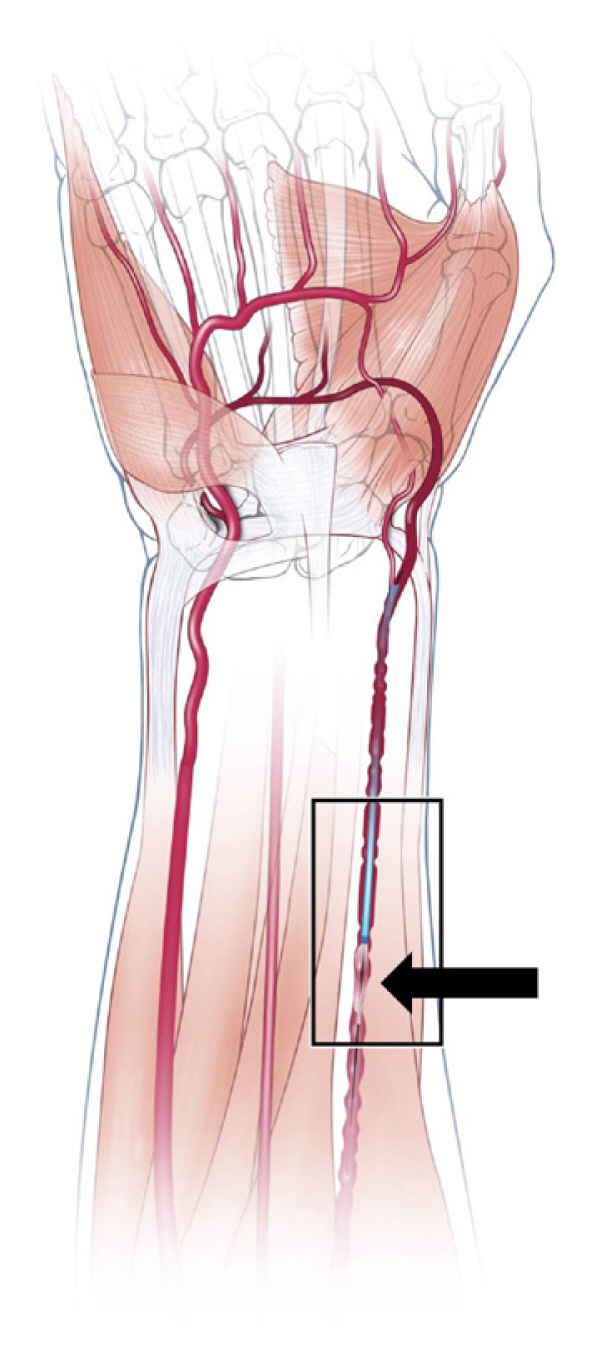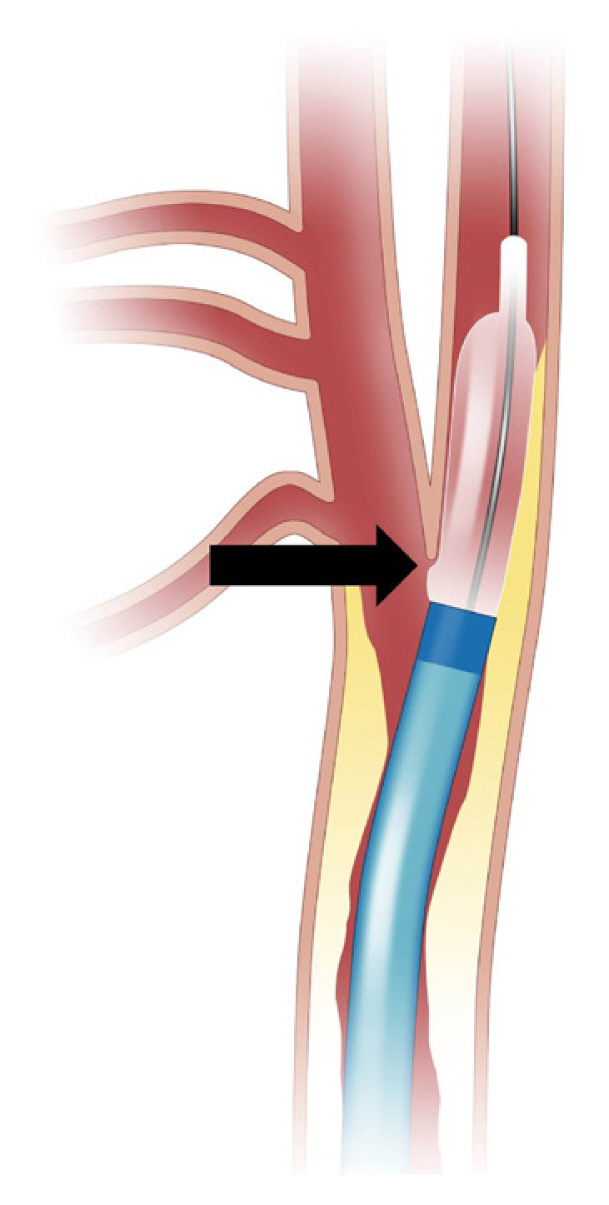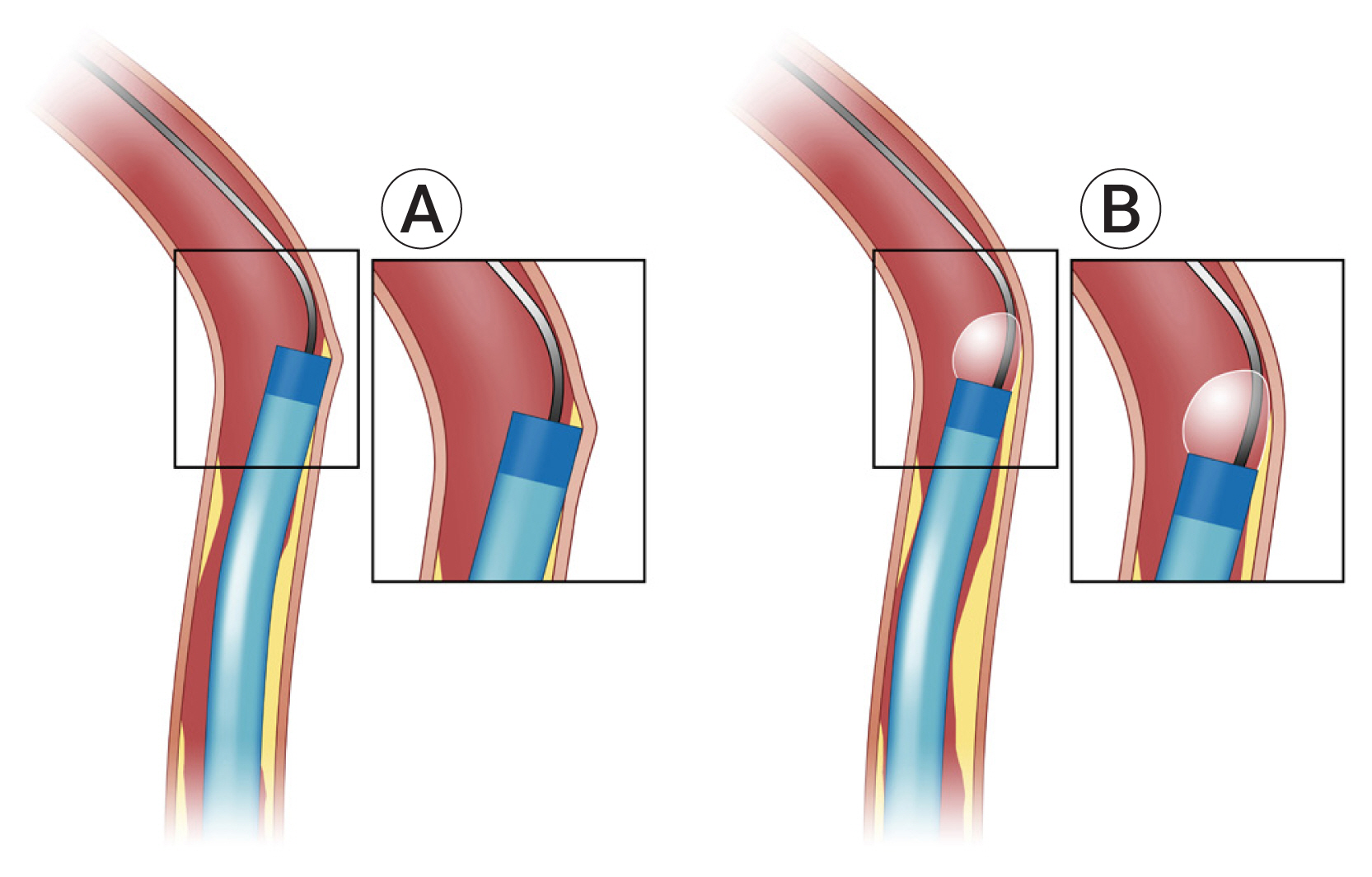J Cerebrovasc Endovasc Neurosurg.
2020 Mar;22(1):26-30. 10.7461/jcen.2020.22.1.26.
Spasm, stenosis and shelves:balloon-assisted tracking techniquesin endovascular interventions
- Affiliations
-
- 1Department of Neurological Surgery and Stroke and Applied Neurosciences Center, University of Washington School of Medicine, Seattle, WA, USA
- 2Department of Radiology, University of Washington School of Medicine, Seattle, WA, USA
- KMID: 2500071
- DOI: http://doi.org/10.7461/jcen.2020.22.1.26
Abstract
- The technique of balloon-assisted tracking (BAT) has been demonstrated in transradial cardio-angiographic procedures. Using three commonly encountered clinical scenarios, we outline the technical details of BAT for managing peripheral and cerebral interventions with challenging vascular access. We describe methods used to overcome vasospasm, stenosis and vascular shelves during interventions for acute ischemic stroke, but these issues are not unique to neuroendovascular cases and the techniques can be applied across all endovascular interventions. We present three acute stroke interventions where anatomic challenges were overcome with the use of endovascular BAT. This article describes a novel application for BAT techniques in endovascular interventions to assist with access in peripheral, cervical and intracranial vessels. These methods can also be used to improve access during diagnostic cerebral angiography. BAT is a useful adjunct when navigating catheters through vasospasm, tortuous anatomy, vascular step-offs or intraluminal plaques.
Keyword
Figure
Reference
-
1. Agelaki M, Koutouzis M. Balloon-assisted tracking for challenging transradial percutaneous coronary intervention. Anatol J Cardiol. 2017; Feb. 17(2):E1.
Article2. Albers GW, Lansberg MG, Kemp S, Tsai JP, Lavori P, Christensen S, et al. A multicenter randomized controlled trial of endovascular therapy following imaging evaluation for ischemic stroke (DEFUSE 3). Int J Stroke. 2017; Oct. 12(8):896–905.
Article3. Burkhardt JK, Shapiro M, Tanweer O, Litao M, Chancellor B, Raz E, et al. Balloon-assisted tracking technique to overcome intracranial stenosis during thrombectomy for stroke. J Neurointerv Surg. 2019; Mar. 11(3):e1.
Article4. Mason PJ, Shah B, Tamis-Holland JE, Bittl JA, Cohen MG, Safirstein J, et al. An update on radial artery access and best practices for transradial coronary angiography and intervention in acute coronary syndrome: a scientific statement from the American Heart Association. Circ Cardiovasc Interv. 2018; Sep. 11(9):e000035.
Article5. Merella P, Lorenzoni G, Casu G. Inside the “Razor Effect”: lessons from optical coherence tomography-what does angiography hide? JACC Cardiovasc Interv. 2019; Feb. 12(4):409–10.6. Patel T, Shah S, Pancholy S, Rao S, Bertrand OF, Kwan T. Balloon-assisted tracking: a must-know technique to overcome difficult anatomy during transradial approach. Catheter Cardiovasc Interv. 2014; Feb. 83(2):211–20.
Article7. Pierot L, Cognard C, Anxionnat R, Ricolfi F. CLARITY Investigators. Remodeling technique for endovascular treatment of ruptured intracranial aneurysms had a higher rate of adequate postoperative occlusion than did conventional coil embolization with comparable safety. Radiology. 2011; Feb. 258(2):546–53.
Article8. Pierot L, Spelle L, Leclerc X, Cognard C, Bonafé A, Moret J. Endovascular treatment of unruptured intracranial aneurysms: comparison of safety of remodeling technique and standard treatment with coils. Radiology. 2009; Jun. 251(3):846–55.
Article9. Sorteberg A. Balloon occlusion tests and therapeutic vessel occlusions revisited: when, when not, and how. AJNR Am J Neuroradiol. 2014; May. 35(5):862–5.
Article10. Spiotta AM, James RF, Lowe SR, Vargas J, Turk AS, Chaudry MI, et al. Balloon-augmented Onyx embolization of cerebral arteriovenous malformations using a dual-lumen balloon: a multicenter experience. J Neurointerv Surg. 2015; Oct. 7(10):721–7.
Article
- Full Text Links
- Actions
-
Cited
- CITED
-
- Close
- Share
- Similar articles
-
- Cervical spinal extradural arteriovenous fistula successfully treated using transarterial balloon-assisted coil embolization
- Endovascular treatment of intracranial aneurysms: Past and present
- Complications after Endovascular Treatment
- A Case of Coronary Pseudostenosis, Diagnosed by Intravascular Ultrasound
- Endovascular Treatment of Wide-Necked Intracranial Aneurysms Using Balloon-Assisted Technique with HyperForm Balloon





